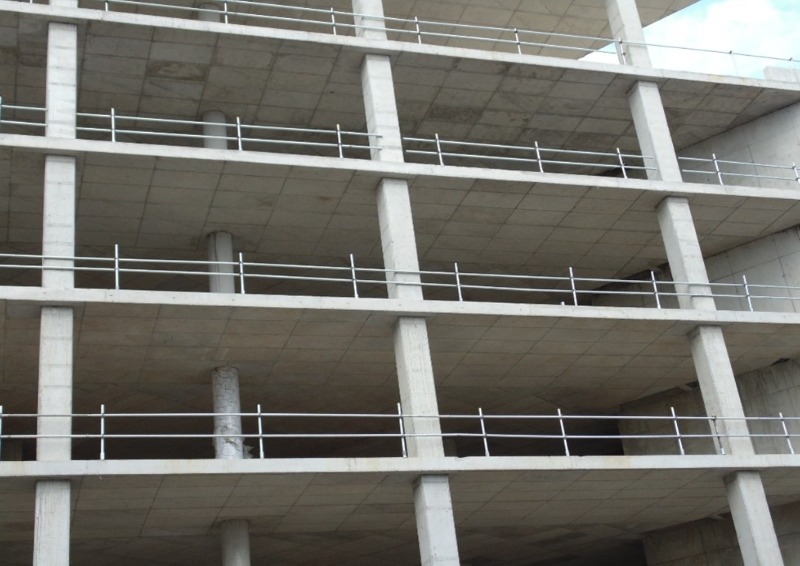Patrick Purcell, author of Concise Guide to Reinforced Concrete Design to Eurocode 2, shares his explanation of reinforced concrete.

- Updated: 07 Apr 2022
- Author: Patrick Purcell
In this note, I will briefly explain what reinforced concrete is, where it is most appropriately used as a structural material and how reinforced concrete structures are designed to meet current European codes of practice. Whether you are an engineering student or a professional engineer, the essentials of good reinforced concrete design practice are explored below.
What is reinforced concrete?
Reinforced concrete, as the name suggests, is a strong durable construction material composed of concrete that is strengthened or reinforced by embedded steel bars. One of the great advantages of using concrete in construction is that, in its liquid form, it can be cast into a variety of shapes. When the best features of both constituent materials (concrete and steel) are combined, their properties complement each other, particularly in terms of strength and durability.
Where is reinforced concrete used?
Because reinforced concrete is such a versatile material, it is used in a wide variety of structures. For example, reinforced concrete is frequently used in the construction of commercial buildings such as office blocks, in bridges to transport vehicles and pedestrians over waterways and in structures such as water retaining reservoirs and water towers.
What structural elements are constructed in reinforced concrete?
A wide variety of structural elements can either be constructed in-situ or precast off-site and assembled on-site. Examples of reinforced concrete elements include beams, columns, slabs and foundations.
How is reinforced concrete designed?
Reinforced concrete structures often carry significant loads so the safe design of such structures is of paramount importance. To achieve this objective, the structural engineer generally designs in accordance with standards or codes of practice that have been developed through research and performance monitoring of reinforced concrete structures.
What codes of practice are used in Europe?
Eurocodes were developed to replace codes published by national standard bodies to provide greater harmonisation in design standards across European countries. Eurocode 2 (EN1992): Design of concrete structures specifies the technical rules for the design of concrete structures.
Where can you learn how to design reinforced concrete structural elements?
The topic of reinforced concrete design is covered in my new book, Concise Guide to Reinforced Concrete Design to Eurocode 2. This work is a concise introduction for all construction professionals interested in designing reinforced concrete structural elements in accordance with Eurocode 2. The general approach adopted is to introduce the reader to the basic design principles applicable to each structural element before working through typical design examples. Further practice problems and outline solutions should prove useful to the reader.
To find out more, read the Concise Guide to Reinforced Concrete Design to Eurocode 2 in Print or as an eBook.
